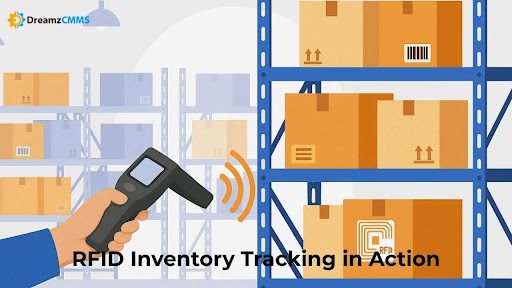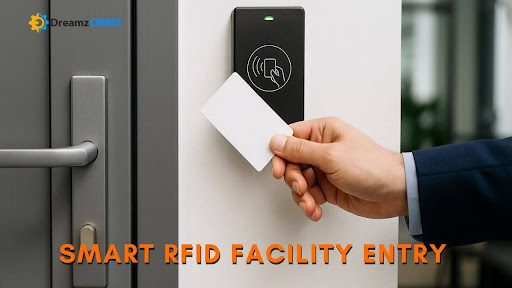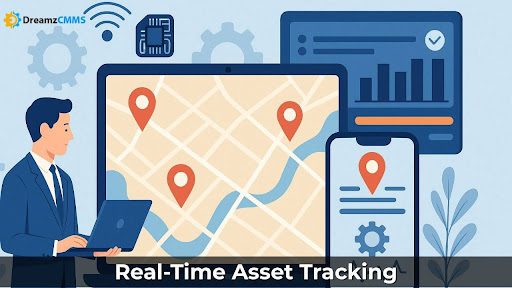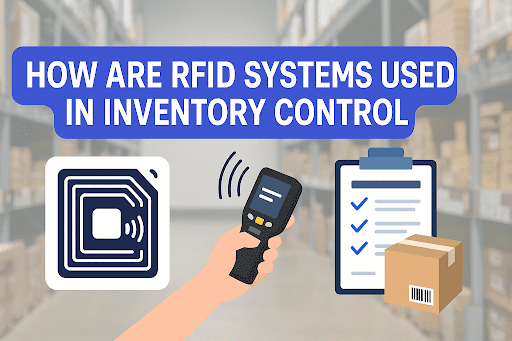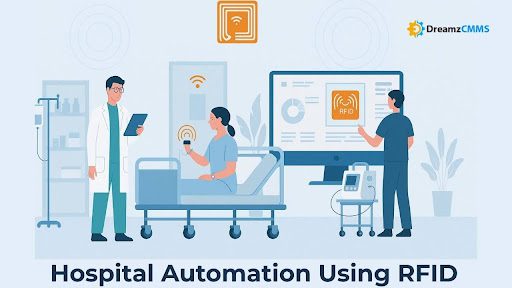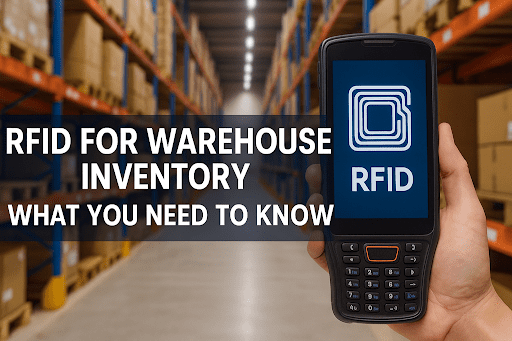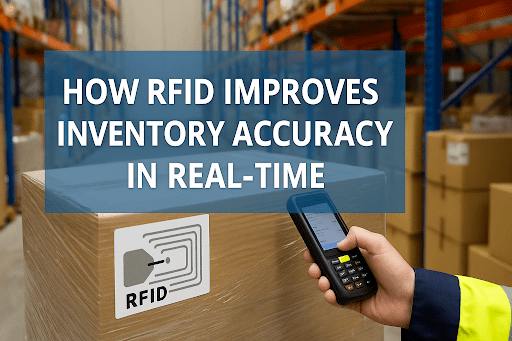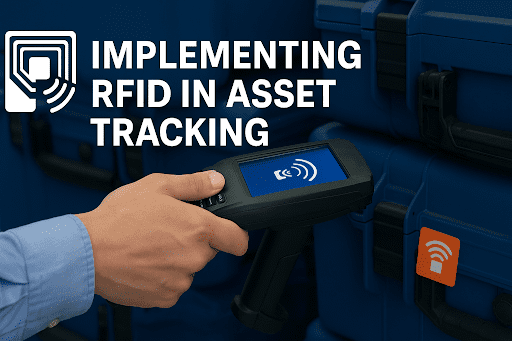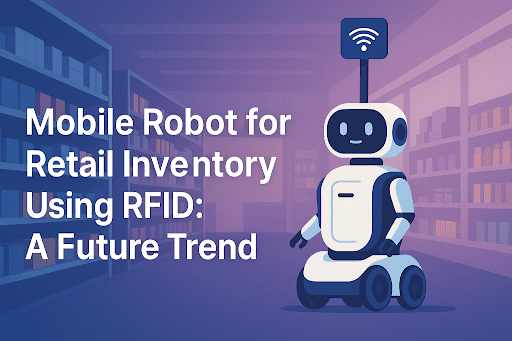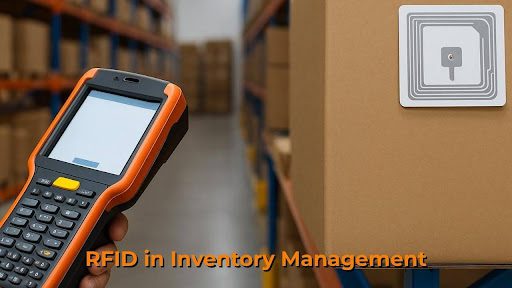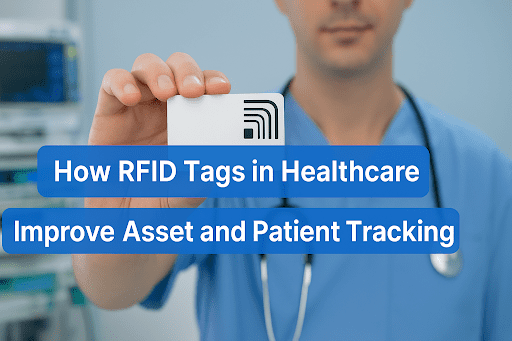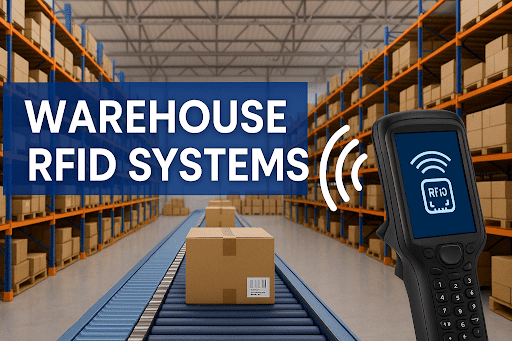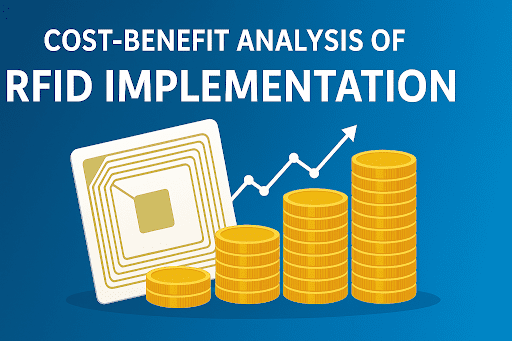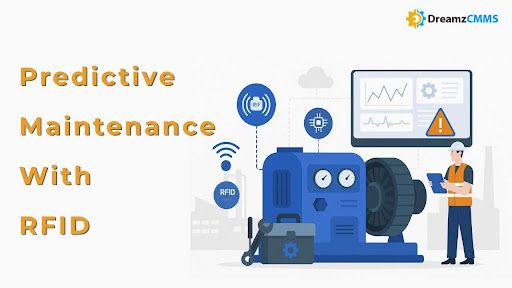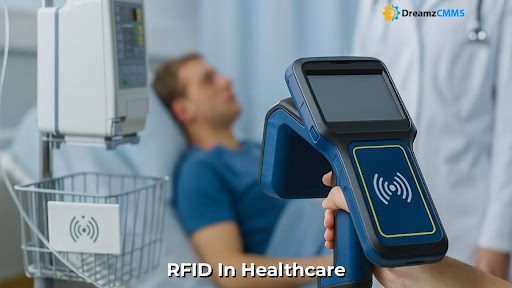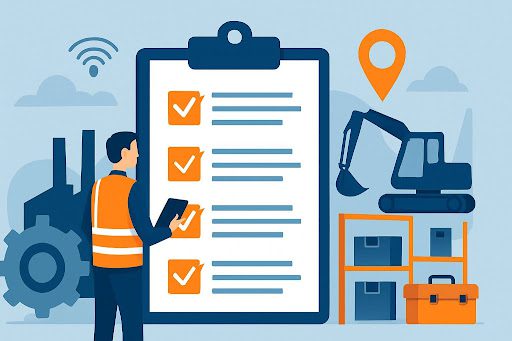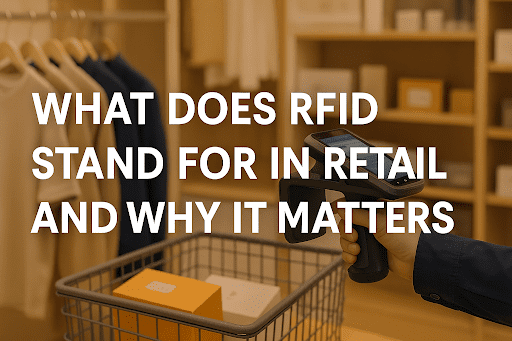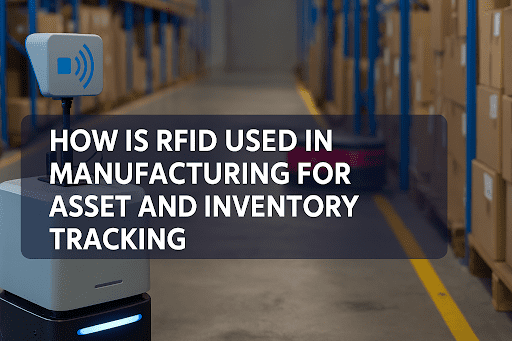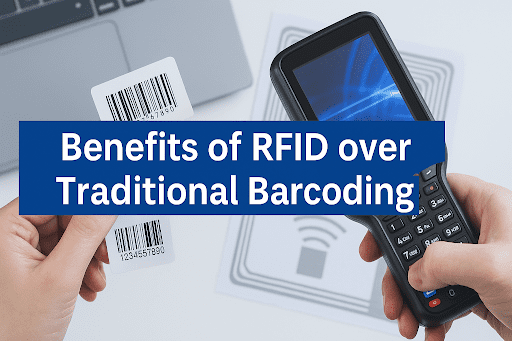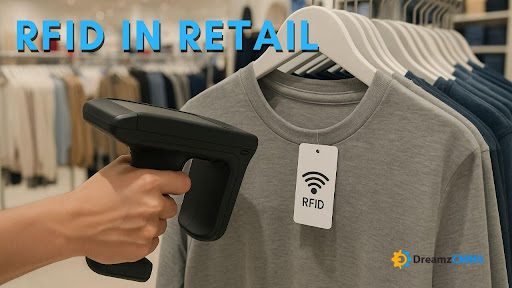 BACK TO Blog
BACK TO Blog
Asset Rental Management
RFID Asset Tracking
Organizations need to move past spreadsheet management and manual stock counts because they must stay competitive in today's dynamic retail and industrial world. How does RFID technology manage inventory efficiently along with its growing popularity? The solution emerges from automated systems and precise tracking combined with instant data access. A
- August 05, 2025
- DreamzCMMS Team
- 10 minutes read
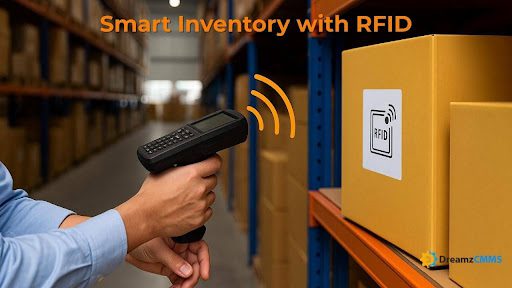
- August 05, 2025
- DreamzCMMS Team
- 10 minutes read
Organizations need to move past spreadsheet management and manual stock counts because they must stay competitive in today's dynamic retail and industrial world. How does RFID technology manage inventory efficiently along with its growing popularity?
The solution emerges from automated systems and precise tracking combined with instant data access. A carefully designed RFID inventory management system optimizes inventory operations while providing clear visibility of data and removing uncertainty from stock control processes.
This blog investigates how RFID inventory tracking systems revolutionize warehouse operations alongside retail stores and industrial assets while connecting with RFID technology success elements.
Optimize Asset Uptime with RFID-Enabled Maintenance
Your maintenance workflows can become more efficient through integrating RFID inventory data which leads to better servicing timing and fewer equipment breakdowns and longer asset lifespans. The platform provides a unified environment for asset tracking and preventive maintenance execution.
Asset Maintenance Management Software – DreamzCMMS
What Is RFID Inventory Management?
RFID inventory management uses Radio Frequency Identification (RFID) technology to track inventory items through electronic tags that contain SKU numbers and additional details like manufacturing dates and lot numbers and location identifiers. Your inventory items obtain RFID tags for inventory control which contain fundamental data points such as SKU numbers and manufacturing dates as well as lot numbers and location identifiers.
The automatic reading capability of RFID tags allows them to function without line-of-sight scanning requirements since RFID readers can detect passive or active tags from anywhere without needing direct access to the tags. RFID technology provides non-intrusive high-speed scanning which makes it suitable for big complex inventory environments.
This system is crucial for:
- Real-time stock visibility with RFID
The system provides real-time inventory visibility so you can monitor stock levels and track product movements before manual updates or physical inventory counts.
- Fast check-in and check-out of items
The bulk scanning process eliminates human errors and cuts down labor costs by automatically recording inventory during receiving and shipping and internal transfer operations.
- Inventory optimization with RFID
Real-time demand alignment with supply ensures optimal stock levels which prevents both overstock and understock situations.
- Scalable, automated stock updates
RFID systems support operations of any size starting from single retail outlets up to large warehouse networks without requiring manual data entry for stock updates.
The integration of RFID inventory automation allows businesses to connect seamlessly with ERP systems and CMMS and warehouse management systems (WMS) to boost end-to-end operational efficiency.
RFID technology enhances both speed and accuracy and reliability of inventory processes for any operation that handles high-value tools in construction yards or serialized equipment in manufacturing facilities or thousands of fast-moving consumer goods (FMCG) in retail warehouses.
Want to understand the basics? Read:
What is RFID Asset Tracking?
How Can RFID Be Used to Manage Inventory?
The following section explains how RFID technology enhances inventory management workflows.
1. Automated Receiving and Put-Away
RFID readers situated at entry points detect arriving goods which automatically update the inventory system. RFID technology enables quick simultaneous scanning of multiple items which outperforms traditional barcode scanning methods that need direct line-of-sight.
The RFID-based system shows workers the proper storage locations for their items by utilizing tag data and warehouse maps which leads to automated put-away and decreases human labor.
2. Real-Time Stock Visibility with RFID
RFID-enabled zones provide real-time monitoring of stock movements along with quantity levels to businesses. You always know:
- What’s in stock
- What’s moving fast
- What needs replenishment
The continuous availability of real-time stock data stops organizations from making expensive errors while boosting their ability to deliver orders precisely. Real-time inventory data stands as the fundamental principle for warehouse operations that use RFID.
For deeper cost-impact insights, check out:
Cost-Benefit Analysis of RFID Implementation
3. Faster and More Accurate Stock Counts
The RFID technology enables rapid bulk scanning operations during cycle count procedures. Handheld scanning devices enable employees to rapidly scan entire rows of inventory while they move through the aisles.
- The automated system provides:
- Higher frequency of cycle counts
- Lower labor cost
RFID leads to better inventory accuracy than traditional stock management practices.
RFID vs Barcode Inventory Tracking
Here’s how RFID vs barcode inventory tracking compares:
| Feature | Barcode | RFID |
| Scan Type | Manual, one at a time | Bulk scanning, automatic |
| Line of Sight Needed | Yes | No |
| Read Distance | A few inches | Several meters |
| Reusability | Limited | High (esp. for assets or bins) |
| Accuracy | Moderate | Very high |
Businesses operating with large-scale operations or high-value items should select RFID for inventory tracking as their optimal long-term investment.
Learn more about starting your journey here: Implementing RFID in Asset Tracking
Components of an RFID Inventory Management System
A complete warehouse inventory RFID solution requires three fundamental components to achieve full automation of RFID inventory tracking. The inventory management system consists of three essential components that work together to deliver real-time tracking as well as efficient stock movement and complete inventory control.
RFID Tags
RFID tags serve as the fundamental components of inventory control systems. The small devices consist of microchips alongside antennas that maintain item data and transmit information wirelessly to RFID readers. The selection of RFID tags depends on operational requirements regarding range and durability together with cost factors.
- Passive RFID Tags
RFID tags receive power through the electromagnetic signals sent by RFID readers instead of carrying internal batteries. The tags function at a low cost and are commonly applied for retail operations and apparel management and inventory monitoring of low-value products. The read distance of passive tags reaches only a few meters which makes them suitable for areas that require close-proximity scanning. - Active RFID Tags
These tags transmit signals continuously because they have internal batteries which extends their reading distance up to 100 meters. The tracking of high-value assets together with industrial machinery and rental equipment works best with active RFID tags throughout extensive facilities. Active tags serve both RFID-enabled warehouse operations and outdoor logistics operations.
The implementation of RFID tags includes sensor capabilities to monitor movement along with temperature and tampering events for rentals and mobile asset tracking applications.
RFID Readers
RFID readers serve as devices that read RFID tag data to transmit it to inventory software processing systems. Various RFID reader forms exist according to the application requirements as well as facility layout and mobility needs.
- Fixed RFID Readers
These devices find their home at warehouse gates together with conveyor belts and docking bays and high-traffic zones. The RFID readers establish automated scanning checkpoints which update stock levels automatically during item passage to deliver real-time RFID stock visibility without human interaction.
- Handheld RFID Scanners
Staff members use handheld scanners for mobile functions including cycle counting and spot audits and shelf replenishment and receiving operations. These devices are mobile and work well in locations where human oversight remains important.
Advanced installations integrate RFID readers into drones and forklifts and robots to support automated inventory workflows.
Inventory Management Software
The RFID inventory management system software represents the essential component which unites all system components. The software operates as the operational control center that receives RFID reader data to create dashboards while initiating automatic processes and alert notifications.
The software performs essential operational functions such as:
- Inventory tracking across multiple locations
- Audit trails and compliance reporting
- Predictive stock replenishment
- Integration with ERP, CMMS, or Asset Maintenance Management Software
- Real-time analytics and RFID inventory insights
The software achieves item tracking while providing meaningful data for business decisions.
The management of tools along with machines and equipment needs to be controlled in rental-based settings. The RFID system can interface with Asset Rental Management Software and other applications.
RFID Inventory Automation in Action
Retail Stores
RFID tags track every SKU from stockroom to checkout. Benefits include:
- Theft reduction
- Inventory visibility across stores
- Faster restocking and improved customer service
Warehouses
The RFID system performs complete workflow automation from receiving to shipping. It helps:
- Monitor fast-moving items
- Reduce picking errors
- Enable automated inventory workflows
Manufacturing Units
RFID tags enable the monitoring of raw materials and work-in-progress and finished goods throughout lean manufacturing and zero-defect dispatch operations.
Logistics & Asset Rentals
RFID systems enable businesses to track their mobile and rented assets by monitoring equipment positions and usage durations and return specifications.
See it in action with:
RFID Asset Tracking Software
Benefits of RFID for Inventory Tracking
Inventory Accuracy Up to 99%
Businesses adopt RFID inventory management systems because these systems deliver exceptional improvements to data precision. RFID delivers exact inventory tracking through receiving and storage and outbound operations because it tracks items accurately.
- The automatic logging process of items through tags makes manual input unnecessary.
- The reduction of errors becomes significant when scanning is missed or manual counts fail or stock items get misplaced.
- Complete inventory logs help simplify compliance audit processes.
The result? The accuracy rate of RFID inventory reaches its maximum at 99 percent which allows managers to depend on their inventory data for vital decision-making.
Real-Time Inventory Updates
RFID technology provides real-time stock visibility which immediately updates inventory systems when items move across different zones. Operations managers obtain immediate stock level visibility without requiring daily reconciliations or physical checks.
- The implementation of RFID readers on gates and shelves enables real-time inventory movement detection.
- Stock discrepancies are flagged immediately, enabling fast corrective actions.
- The capability for real-time monitoring enables just-in-time inventory strategies while blocking operational delays.
RFID inventory management provides vital benefits to operations that use high-turnover retail stores or extensive RFID-controlled warehouses.
Lower Operating Costs
RFID systems demand higher initial expenses than barcode systems but they provide substantial long-term cost reductions. RFID inventory automation through automation and accuracy minimizes operational disruptions and reduces operational expenses thus becoming a long-term cost-effective solution.
Smarter Replenishment
Businesses can transition from reactive to proactive stock management through RFID inventory insights. Managers can execute automated replenishment through real-time stock information and movement patterns instead of waiting for low inventory levels or periodic reports.
- Automatic reorders should trigger when stock reaches a specific minimum level
- Identify slow-moving items and adjust purchasing decisions accordingly
- Free up working capital by avoiding overstocking
RFID-based smart replenishment systems optimize inventory turnover while enhancing cash flow while maintaining ideal stock levels to achieve inventory optimization.
Tips for Successful RFID Adoption
- Implementing RFID tracking on high-risk or high-value items.
Begin with assets or SKUs where accuracy matters most.
- Use Pilot Projects
A single test site should implement RFID tagging and scanning before implementing the solution across multiple locations.
- Select Compatible Tags and Readers
Select hardware components according to the desired range and material type and volume needs.
- Integrate with Management Software
The complete automation process becomes possible when RFID data links to inventory systems or CMMS.
- Train Teams Thoroughly
The RFID process requires complete understanding from operational and IT personnel to achieve proper implementation.
Conclusion: Drive Efficiency with RFID Inventory Automation
So, how can RFID be used to manage inventory?
RFID technology enables organizations to automate their scanning operations and eliminate manual data entry while providing real-time stock visibility which leads to quicker operations and reduced losses and improved inventory planning. The inventory control standards for next-generation operations come from RFID technology which applies to warehouses, factories and retail shelves.
Experience Smarter Inventory Management with DreamzCMMS
The combination of RFID-powered automation along with real-time inventory visibility enables organizations to transform warehouse and retail and asset rental operations.
The improved control system combined with error reduction leads to optimized inventory lifecycle management.
